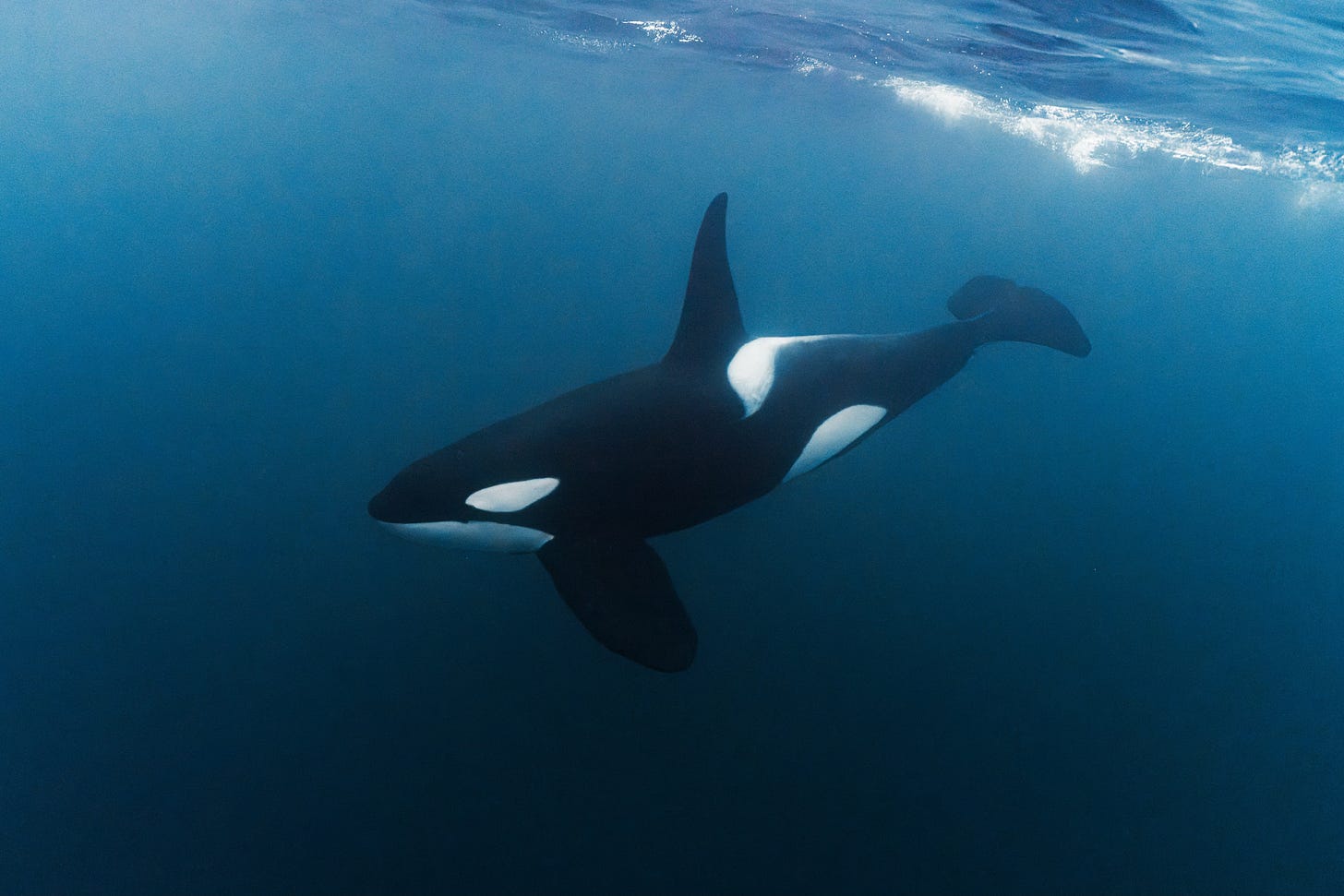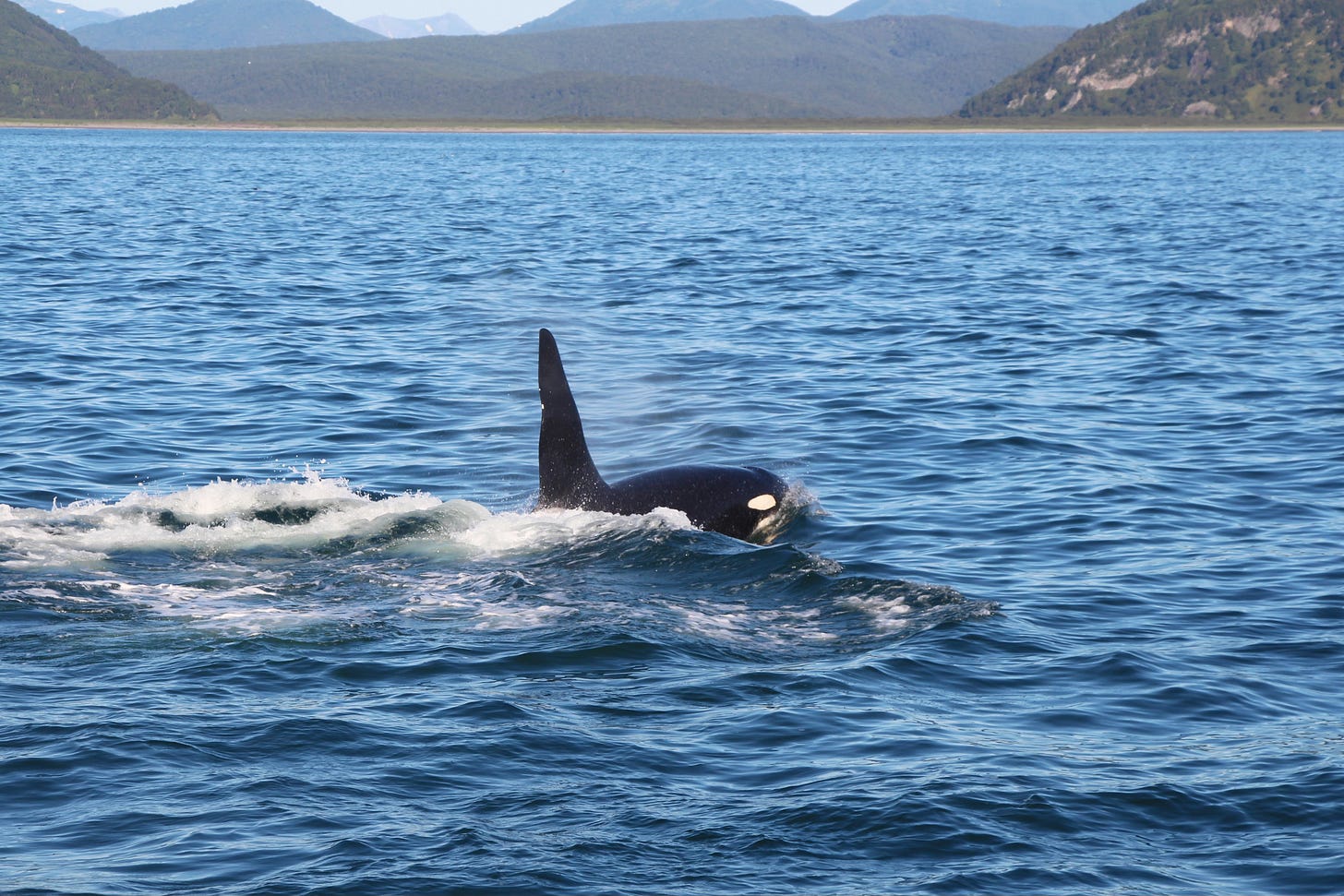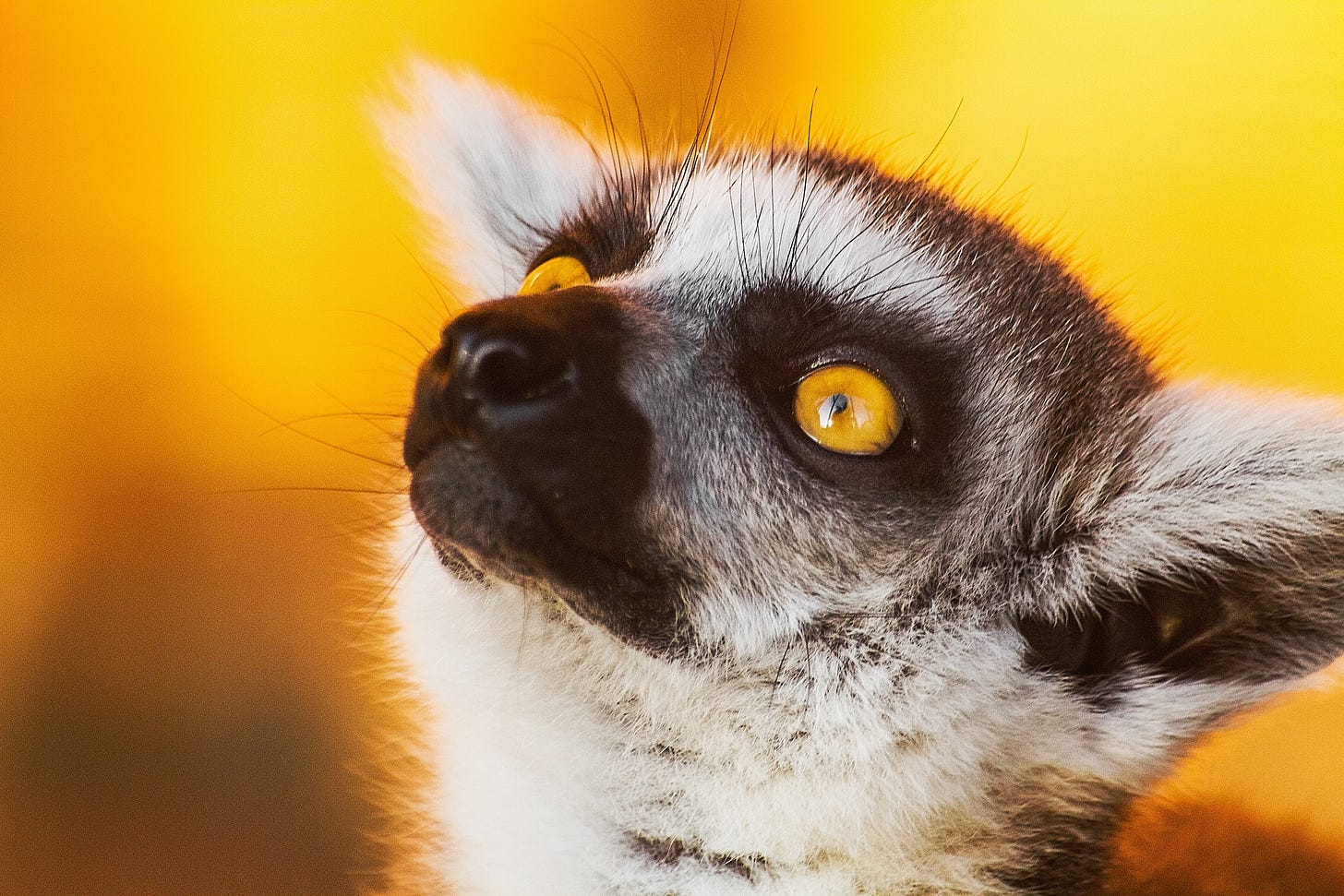These apex predators want to be your friend — and they have fish to prove it
Plus lemurs are aging gracefully in a way that could eventually help humans
By Dan Fletcher
Here is today’s audio edition.
Picture this: you're floating in the middle of the ocean when a 6,000-pound orca swims up and offers you a fish. Not aggressively — gently, like a friend sharing their lunch. It holds the fish in its mouth, waits for your reaction, and seems genuinely curious about what you'll do next.
This scene has played out 34 times across four oceans over the past two decades, according to a new study published this week. Scientists call it "interspecific generalized altruism," which is a jargon-y way of saying "being nice to other species for no particular reason." These apex predators are essentially trying to make friends by sharing their food. Yeah, with us. The species that's spent centuries either hunting them or keeping them in concrete pools.
In 97% of cases, the orcas waited for a human response before doing anything with their offering. Sometimes they'd try again if humans didn't take the hint. One orca off New Zealand repeatedly offered pieces of stingray to an underwater photographer, seemingly frustrated that this incompetent human couldn't figure out how to properly accept a gift.
But this behavior isn't actually new. We just forgot that orcas have been trying to work with us for a really long time.
From 1840 to 1930, a pod of orcas in Eden, Australia, had the most unlikely business partnership in history. Old Tom, a 22-foot male, would slap his tail on the water to alert local whalers that baleen whales had entered the bay. The orcas would help herd the whales, even grabbing harpoon ropes in their teeth. In return, they got the whale's tongue and lips — "The Law of the Tongue." That was the deal, and both sides honored it for 90 years. Old Tom's skeleton still shows wear marks from all that rope-pulling.
But whhen Old Tom died in 1930, the partnership died with him (and thankfully, whaling like this has died off, too.) But now, nearly a century later, orcas are trying to forge a relationship again. And we should probably pay attention, because these are some of the smartest animals on the planet and they’re not always using that energy for good.
Last year, scientists documented orcas manufacturing tools from kelp to groom each other. Meanwhile, off Spain and Portugal, a more mischievous group has figured out how to systematically remove rudders from boats. Over 700 incidents since 2020 suggest they're teaching this skill to their kids.
Here's the tragic irony: as we're discovering how brilliant orcas are, we're simultaneously driving some populations toward extinction. The Southern Resident killer whales — some of the same ones offering us fish — number just 73 individuals. They're starving because we've dammed their rivers and depleted their salmon. They're going deaf because ship noise interferes with their echolocation.
But it's not hopeless. The Bigg's killer whale population has bounced back from near-extinction to over 400 individuals. Programs like Quiet Sound have shown that when ships slow down, underwater noise drops by 50%, allowing orcas to hunt effectively again.
So what do these fish offerings mean? Maybe orcas think we're terrible hunters who need help. Maybe it's play, or teaching. But I think it's simpler than that.
Pacific Northwest Indigenous peoples have always called orcas relatives. The Tlingit people tell of the legend of Natsilane, who carved the first orca from cedar and commanded it to never harm humans but to help those in distress. For thousands of years, these cultures understood what science is just now proving: orcas are capable of genuine relationship.
Maybe these fish offerings are exactly what they appear to be — invitations. Attempts to rebuild a partnership that once worked for both species. A reminder that in a world where we've mostly forgotten how to live alongside other animals, some animals haven't forgotten how to live alongside us.
The question isn't why orcas are offering us fish. The question is whether we're smart enough to figure out what they're really offering: a chance to be better neighbors in the ocean we share.
Quick links! 🔗
Scientists just discovered that chimpanzees follow fashion trends too, with researchers documenting how a "grass-in-ear" look went viral at a Zambian sanctuary. Starting in 2010, a female chimp began dangling grass blades from her ears during leisure time, and the behavior quickly spread through her group. More than a decade later, chimps in a completely separate group nine miles away started doing the same thing—plus adding a twist by inserting objects into their rectums. The key connection? Human caregivers who had a habit of cleaning their ears with matchsticks, suggesting the chimps learned by watching their human companions. Lead researcher Ed van Leeuwen notes these behaviors aren't functional (no pain relief or scratching involved) but seem to be about social bonding and fitting in—just like human fashion trends.
Lemurs are aging gracefully in ways that could teach humans a thing or two about getting older. Biological anthropologist Elaine Guevara compared ring-tailed and sifaka lemurs at Duke Lemur Center, expecting to find "inflammaging" (chronic inflammation that develops as humans age and contributes to heart disease and diabetes). Instead, she discovered something surprising: neither lemur species showed age-related increases in inflammation. Ring-tailed lemurs actually showed declining inflammation as they aged. Since lemurs and humans share a common primate ancestor, this suggests inflammaging isn't inevitable in primates — and might not even be universal in humans.








How wonderful to be chosen by orcas in the fish distribution system.